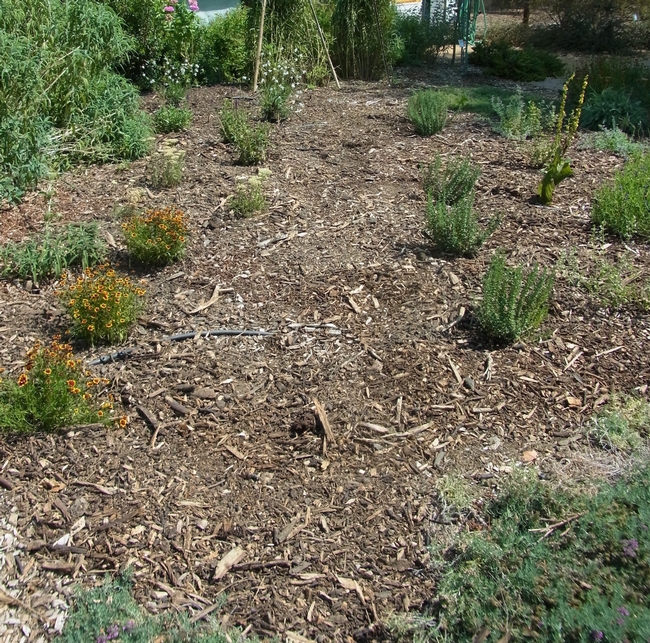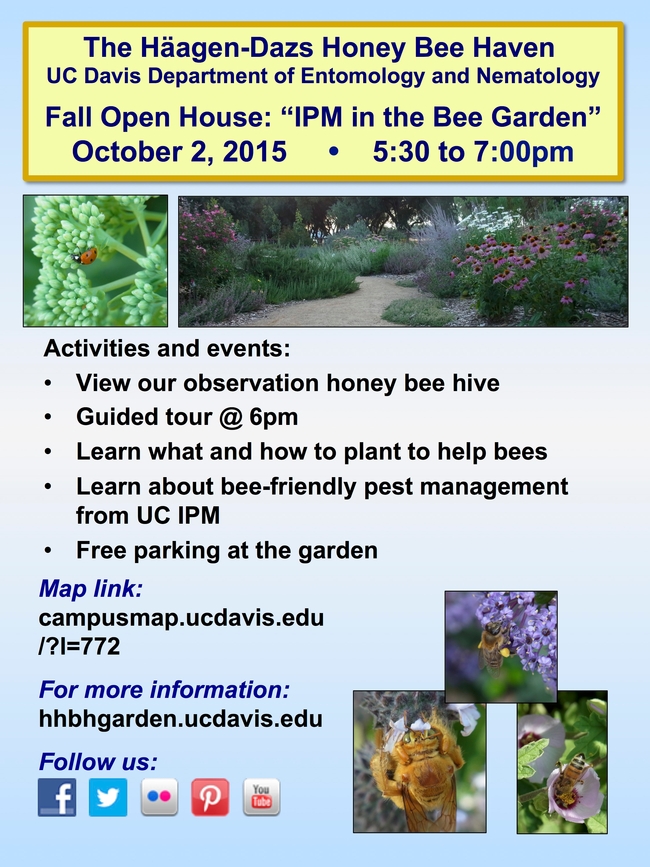- Author: Christine Casey
We know it's fall at the Honey Bee Haven is when our asters come into their full glory. This large (more than 600 species) group of plants even has its own book. Asters recently underwent a taxonomic revision that split the genus Aster into five genera. The commonly-available species either remained in Aster (Old World species) or were moved to Symphyotrichum (New World species).But the common name aster still applies to all. True plant nerds will want to read this detailed summary of the cultivated species. Blooming into November, asters are a valuable late-season source of pollen for bees and nectar for bees and butterflies.

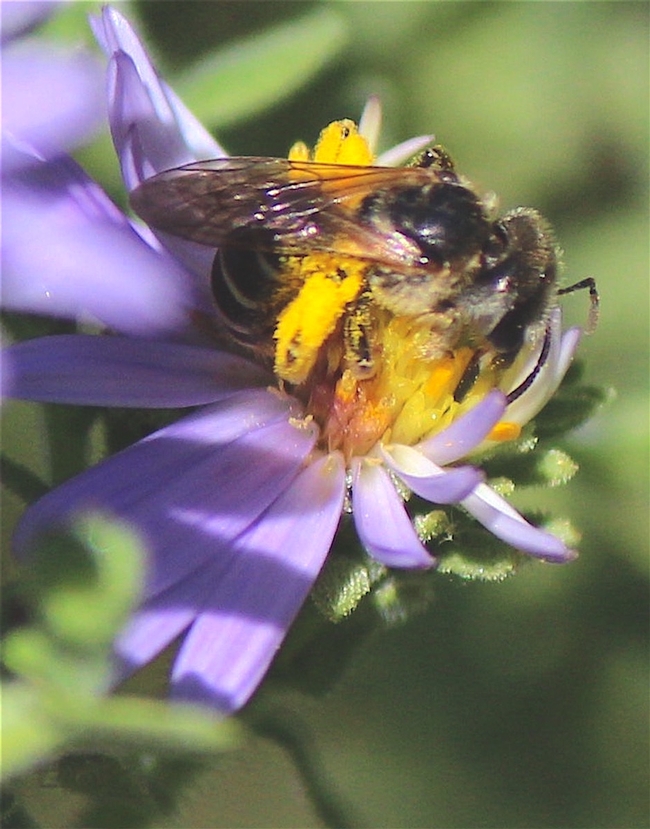
These are the species we have at the Haven, listed in order of bloom:
Aster 'Purple Dome': Symphyotrichum novae-angliae 'Purple Dome'. The species is native to the US east of the Rocky Mountains. This cultivar, which is a UC Davis Arboretum All-Star, is the first aster to bloom at the Haven. It typically starts flowering in late June; deadheading results in several more flushes of bloom until frost. It produces deep purple flowers and stays under 18 inches tall. It will spread and we divide ours every other year.
California aster: Symphyotrichum chilense. This one is about 24 to 30 inches tall; the amount of spread depends on how frequently it is watered. Ours receive a deep soaking about every three weeks and so far we've not seen any invasive tendencies.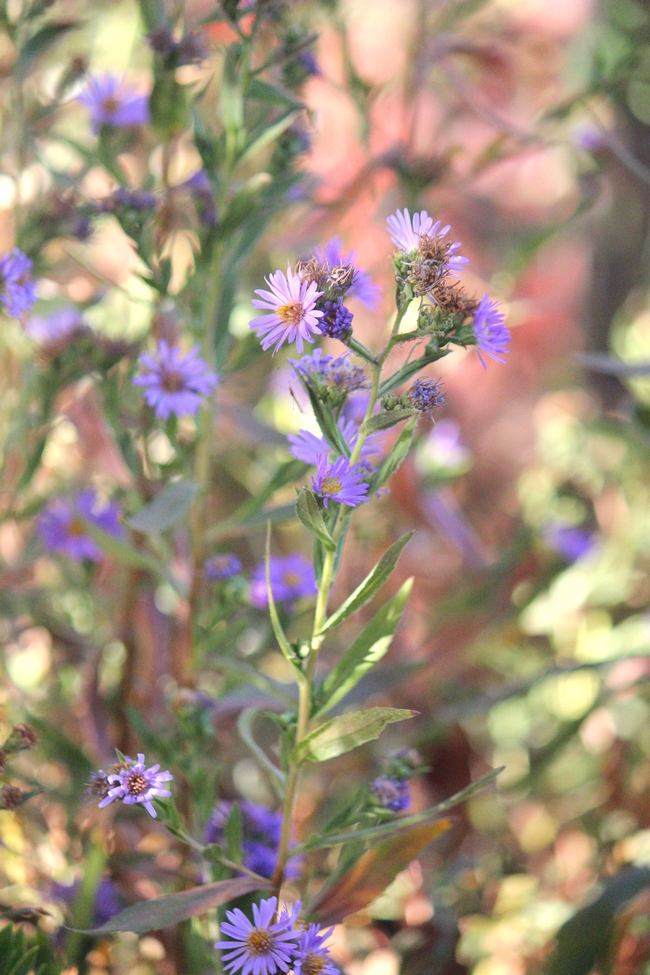
Aster 'Wood's Pink':Symphyotrichum dumosum 'Wood's Pink'. This aster has bright pink flowers and is native to the northeastern US. Ours is watered daily. It grows 12-16" tall, making it a nice addition to the front of a border. The species was used as a parent for developing smaller cultivars by Victor Vokes of the UK War Graves Commission, who needed low-growing, late fall color for WWI cemeteries.
Aster 'Fanny's': Symphyotrichum oblongifolium 'Fanny's'. The story of this cultivar of a southeastern US species is that Ruth Knopf of South Carolina acquired the aster from her maid, Fanny, who in turn received it from her grandmother. Fanny is 3 to 4 feet tall and wide.

Aster 'Bill's Big Blue': Symphyotrichum 'Bill's Big Blue'. Give Bill some room! This selection can reach 5 to 6 feet in height and width. It will bloom through November. We divide Bill yearly. 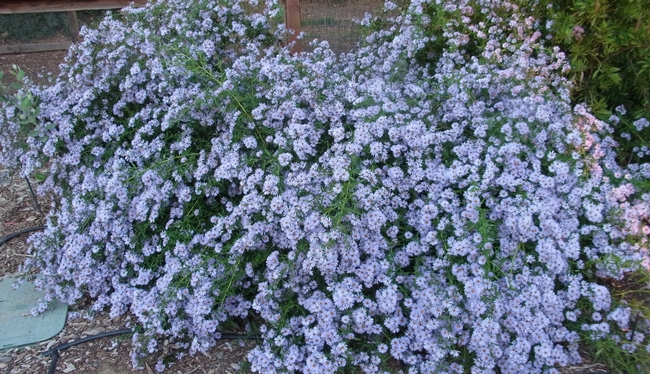
- Author: Christine Casey
While entomologists might hope that we select plants for our gardens based only on their value as bee resources, gardeners want attractive plantings. To bridge that gap, here are some suggested plant pairings for the bee garden that not only look good together but also provide complementary bee resources (i.e. one provides pollen and the other nectar) and have similar light and water needs.
Winter
Winter and early spring is when our native wildflowers shine. These re-seed easily, so a confined area like a parkway strip is a good place for them; sow seeds in late fall and let winter rains do the rest. If spread to other areas of the garden is a concern, pull these plants while they're still flowering before seeds are set. A great pair for full sun are California poppy (Eschscholzia californica) and phacelia (several species); orange and purple are complimentary colors and always look good together. A pair that can take some shade is Chinese houses (Collinsia heterophylla) and five spot (Nemophila maculata). Their purple and white flowers are an attractive combination; Chinese houses provides nectar and the five spot is a pollen source.



Spring
Honeywort (Cerinthe major 'Purpurascens') is an annual that provides both pollen and nectar. Be warned....it re-seeds with vigor! The Haven's plant is well-used by honey bees, and this year it was favored by a California bumble bee (Bombus californicus) queen. It's paired here with foothill penstemon (Penstemon heterophyllus), which covers the honeywort's sparse lower growth and provides nectar. Another spring combination are the California natives seaside daisy (Erigeron 'Bountiful') and California sunflower (Encelia californica). Yellow and purple are a pleasing combination and are colors that are attractive to bees. Both plants provide pollen and nectar.


Summer
Yellows and purple continue into the summer. Yarrow 'Moonshine' is a classic Mediterranean garden plant that provides pollen; it's paired here with 'Purple Ginny' sage, but it works well with any of the autumn or little-leaved sages (which are nectar sources). Another summer combination is catmint (Nepeta x faassenii), which provides nectar, and the seaside daisy (Erigeron 'Bountiful'), which provides both pollen and nectar. Both will re-bloom with regular deadheading.


Fall
For fall bloom, another yellow and purple combination is bluebeard (Caryopteris x clandonensis) and goldenrod (several species/cultivars). Both are pollen and nectar sources that grow in part shade; goldenrod will spread over time so keep that in mind when selecting a planting location.


Happy planting!
- Author: Christine Casey
A frequent question from Haven visitors at this time of year is what we do to prepare the garden for winter. Most of our winter pruning is done in January and February, so we do little at this time of year. Leaving spent flowers and dried stems ensures plenty of seeds for the birds and overwintering habitat for beneficial insects. Garden volunteers often see scores of ladybird beetles emerge from the base of plants when they are pruning in the January.
Most plants get cut back to the ground; an exception is Sedum 'Autumn Joy'. This plant has hollow stems, and by leaving six to eight inches of stem we create cavity-nesting bee habitat. 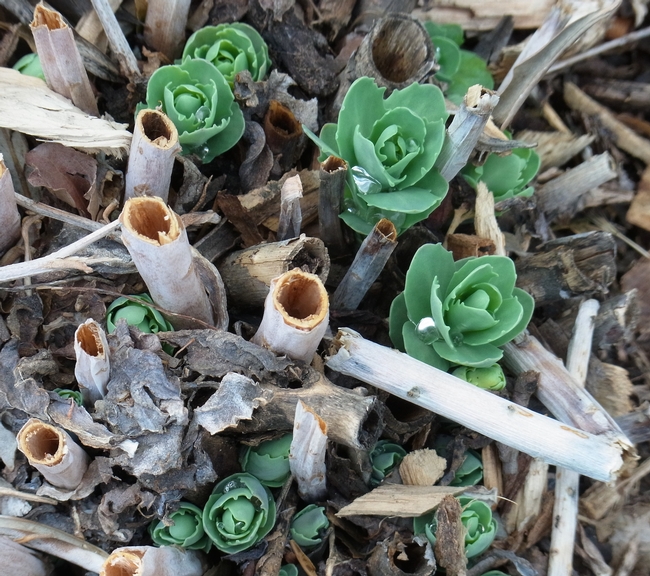
The other winter task at this time of year is consolidating the bee hive. We reduce the hive from three boxes to two, and place frames with the most brood (immature bees) at the center of the lower box so they are protected from the colder outer areas. 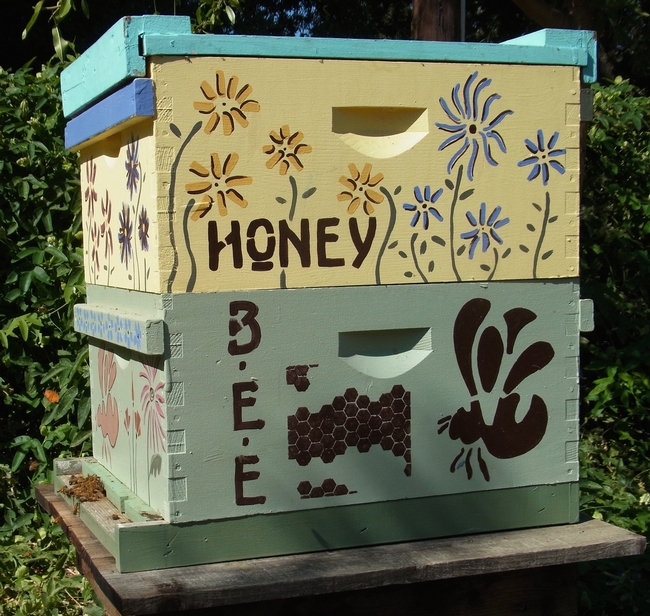

The hive has nine frames with brood, all of which were well-populated with bees.
An extra frame of honey fills the tenth slot in the lower box. The top box contains ten frames of honey for the girls to feast on over the winter.
The hive will be left unopened for the winter, although I'll continue to monitor activity at the entrance over the next few months.
- Author: Christine Casey
Our final open house of 2015 will take place on October 2 from 5:30 to 7:00pm and will focus on integrated pest managment (IPM) in the bee garden. Folks don't want to hurt bees but may also have more harmful insects and diseases than they'd like. How does a bee gardener reconcile this dilemma? Join us at the open house, along with folks from the UC IPM Program, to learn more about bee-friendly pest management tools.
Of course we'll also have our usual bee-oriented activities such as the honey bee observation hive, native bee specimens, and bee experts to answer your questions. Click here for full details about the program. Click here for a map link.
What's our pest management program at the Haven? We have several different beneficial insects that help keep the ones we don't want in check; you might see these at the open house. Many are aphid predators:
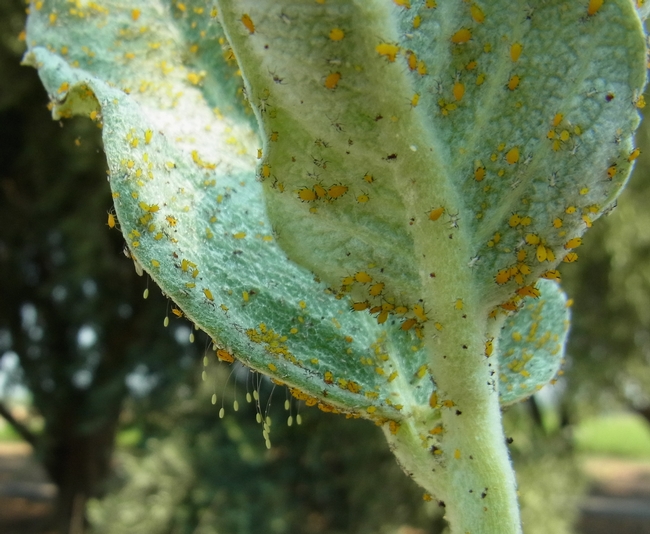



Among the pest problems we had this year, damage by the redhumped caterpillar was the most obvious: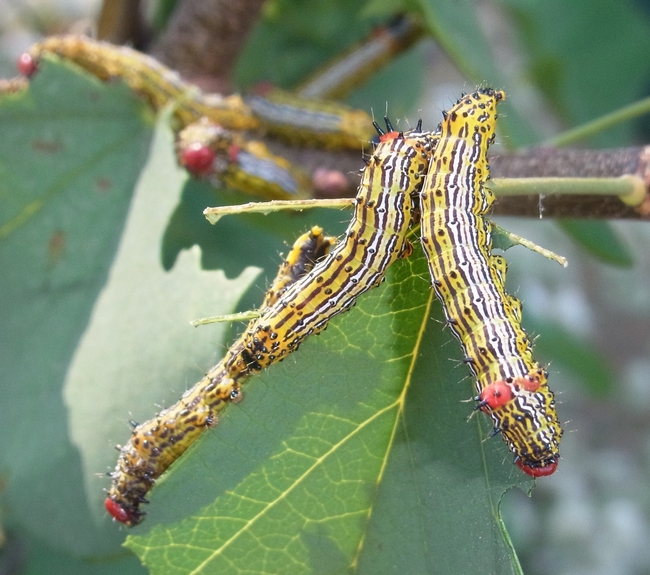
- Author: Christine Casey
The garden bed to the right of the Honey Bee Haven entrance has been re-planted. As with any garden, some material had become overgrown and other plants were at the end of their productive flowering life. And remember at the Haven we're all about flowers!
The new planting emphasizes long-blooming bee favorites that will do well in full sun to light shade in much of California. With a few exceptions, this bed contains plants with a Medium or Low WUCOLS water-use rating. For the complete plant list and planting plan, including bloom times, flower color, and water use, click here.
Thanks to volunteers Cassie Bullock and Rick Williams who did much of the plant removal, planting, and mulching.